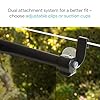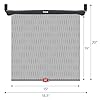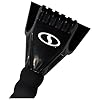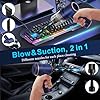Table of Contents
Learning how to disconnect car battery power is a fundamental skill every vehicle owner should master. Whether you’re performing routine maintenance, installing new accessories, or storing your vehicle for an extended period, properly disconnecting your battery is the first and most critical step to ensure both your safety and the health of your vehicle’s sensitive electronic systems.
While the process may seem straightforward—and indeed, it can be completed in just a few minutes with basic tools—understanding the why behind each step is what separates a safe, effective procedure from one that could result in dangerous electrical shorts, damaged components, or personal injury.
This comprehensive guide will walk you through not only the precise steps needed to disconnect your car battery safely but will also delve into the essential tools required, crucial safety precautions often overlooked, and important considerations for what happens to your vehicle’s electronics once power is removed. By following these methodical instructions, you’ll gain the confidence to perform this essential task correctly, protecting both yourself and your vehicle’s intricate electrical ecosystem.
Why Knowing How to Disconnect Your Car Battery Matters
There are numerous scenarios where disconnecting your car battery isn’t just recommended—it’s essential. Beyond the obvious situation of replacing a dead or failing battery, there are several other common circumstances where this knowledge proves invaluable.
Common Situations Requiring Battery Disconnection
- Vehicle Storage: If you plan to park your car for several weeks or longer, disconnecting the battery prevents parasitic drain from slowly depleting its charge. A battery that is completely drained can become permanently damaged and fail to hold a charge in the future.
- Electrical System Work: Any time you work on your vehicle’s electrical components—installing new stereo equipment, adding auxiliary lights, or repairing wiring—disconnecting the battery is a crucial safety measure to prevent short circuits, electrical shocks, or damage to sensitive electronic modules.
- Major Mechanical Repairs: For certain mechanical procedures where accidental contact with electrical components is possible, disconnecting the battery provides an extra layer of safety for both the technician and the vehicle’s systems.
- Emergency Situations: In some accident scenarios or when dealing with electrical malfunctions like smoking wires, knowing how to quickly disconnect the battery can prevent more serious damage or even fire.
The Critical Importance of Safety
A car battery stores a substantial amount of energy and can deliver hundreds of amps of current—enough to cause severe sparks, heat, and potential injury if handled improperly. The battery’s positive terminal is always “hot” or energized, meaning electricity flows from it, creating a potential hazard whenever it comes into contact with grounded metal surfaces. Modern vehicles also contain sophisticated computers that manage everything from engine performance to safety systems. An improper battery disconnection can potentially cause voltage spikes that may damage these sensitive electronic components, leading to expensive repairs.
Essential Tools and Safety Gear for Battery Disconnection
Having the right tools before you begin not only makes the job easier but significantly enhances your safety during the process.
Required Tools
- Wrench or Socket Set: Most battery terminals require a 10mm wrench, but having a set with multiple sizes (typically 8mm to 13mm) ensures you’ll have the correct fit for your specific vehicle. A socket set with various extensions can provide better access to terminals in tight spaces.
- Wire Brushes: A battery terminal cleaning brush (typically a dual-wire brush with cup and pipe cleaning styles) is essential for removing corrosion from both the battery posts and cable connectors.
- Electrical Tape or Terminal Protectors: These are used to cover the disconnected cable ends to prevent accidental contact with metal surfaces.
Personal Protective Equipment (PPE)
- Safety Glasses: Always wear eye protection to shield your eyes from potential sparks or battery acid splashes.
- Chemical-Resistant Gloves: Wear gloves to protect your hands from battery acid and corrosion on the terminals. Acid-resistant gloves are specifically recommended for this task.
- Remove Jewelry: Take off any rings, bracelets, or necklaces before starting, as metal jewelry can cause short circuits if it contacts the battery terminals.
Optional But Helpful Items
- Battery Memory Saver: This small device plugs into your vehicle’s OBD-II port or cigarette lighter and provides temporary power to preserve electronic settings (radio presets, computer adaptations, etc.) while the main battery is disconnected.
- Baking Soda and Water: A mixture of baking soda and water is effective for neutralizing and cleaning battery corrosion.
- Anti-Corrosion Grease: Applying this to the clean battery terminals after reconnection helps prevent future corrosion.
Table: Essential Safety Gear and Its Purpose
| Safety Item | Purpose | Consequence of Not Using |
|---|---|---|
| Safety Glasses | Protects eyes from sparks and acid | Risk of eye injury from accidental short circuits or battery acid |
| Chemical-Resistant Gloves | Protects skin from acid and corrosion | Chemical burns from battery acid; skin irritation from corrosion |
| Removing Jewelry | Prevents accidental short circuits | Jewelry can bridge terminals, causing burns, battery explosion, or welding |
| Proper Tools | Ensures secure grip and control | Slipped tools can cause shorts, damage to terminals, or personal injury |
Step-by-Step Guide: How to Disconnect Your Car Battery Safely
Follow these methodical steps to ensure you disconnect your car battery safely and correctly. Rushing through this process or skipping steps can lead to dangerous situations or damage to your vehicle’s electrical system.
Step 1: Pre-Disconnection Preparation
- Turn Off the Ignition: Ensure your vehicle is completely turned off and remove the keys from the ignition. This prevents any potential electrical backfeed and ensures all systems are powered down.
- Engage the Parking Brake: Set the parking brake to prevent the vehicle from moving while you’re working.
- Locate the Battery: Most batteries are found under the hood, but some vehicles have them in the trunk or under the rear seat. Consult your owner’s manual if you’re unsure of the location.
- Identify the Terminals: Locate the positive (+) terminal, typically marked with red and/or a plus sign, and the negative (-) terminal, typically marked with black and/or a minus sign. The positive terminal often has a plastic cover and is connected to a thicker cable.
Step 2: Disconnecting the Negative Terminal First
- Why This Order is Critical: Always disconnect the negative terminal first. The negative terminal is connected to the vehicle’s chassis (ground). By disconnecting it first, you eliminate the risk of creating a short circuit if your tool accidentally touches any metal part of the vehicle while working on the positive terminal.
- Loosen the Negative Clamp: Using your wrench, turn the nut on the negative terminal clamp counterclockwise to loosen it. You typically don’t need to remove the nut completely—just loosen it enough to allow the clamp to be twisted and lifted off the battery post.
- Remove and Secure the Cable: Once loose, carefully twist and lift the negative cable end off the battery terminal. Position it well away from the terminal so it cannot accidentally make contact. Some experts recommend securing it with a zip tie or similar restraint.
Step 3: Disconnecting the Positive Terminal
- Repeat the Process: With the negative terminal safely disconnected and secured, repeat the same process for the positive terminal. Loosen the nut, remove the cable from the battery post, and move it safely away from the battery.
- Additional Precaution: For extra safety, wrap the exposed positive cable end with electrical tape or a non-conductive material like a cloth to prevent any accidental contact with metal surfaces.
Step 4: Removing the Battery (If Necessary)
- Remove Battery Hold-Down: Most batteries are secured with a hold-down bracket or strap. Use your wrench to loosen and remove the fasteners, then set the hold-down aside.
- Lift Out the Battery: Carefully lift the battery straight up and out of its tray. Car batteries are heavy (typically 30-50 pounds), so lift with your legs, not your back, and keep the battery level to avoid spilling electrolyte.
- Inspect and Clean: With the battery removed, this is an ideal time to inspect the battery tray for corrosion and clean it if necessary using a baking soda and water solution.
Table: Correct Disconnection Sequence
| Step | Terminal | Key Action | Safety Rationale |
|---|---|---|---|
| 1 | Negative (-) | Loosen clamp and move cable away | Removes ground connection, eliminating shock/short circuit risk |
| 2 | Positive (+) | Loosen clamp, remove and insulate cable | Prevents accidental contact with now-safe ground system |
| 3 | Hold-Down | Remove bracket or strap | Allows safe battery removal without strain on connections |
| 4 | Battery | Lift straight out carefully | Prevents acid spills and physical injury from heavy weight |
What to Expect After Disconnecting Your Car Battery
Understanding the effects of battery disconnection on your vehicle’s electronic systems will help you prepare for what needs to be reset or recalibrated once power is restored.
Electronic System Resets
When you disconnect the battery, you’re essentially performing a “hard reset” on your vehicle’s electronic systems. This means:
- Radio and Infotainment Systems: You will likely lose radio presets, paired Bluetooth devices, and navigation system settings. Have your radio security code handy if your vehicle requires one.
- Engine Control Module (ECM): The ECM may lose its adaptive memory, which includes learned driving patterns and trim adjustments. The engine might idle roughly or exhibit slightly different performance for a short period as the computer relearns these parameters.
- Power Window and Sunroof Memory: Some vehicles with auto-up/down windows may need to be reprogrammed after battery disconnection. Consult your owner’s manual for the specific procedure.
- Clock and Personal Settings: All time-based functions will need to be reset, and any personalized settings may revert to factory defaults.
Using a Memory Saver Device
To avoid losing these settings, consider using a memory saver device. These small units plug into your vehicle’s OBD-II port or cigarette lighter and provide temporary power to the essential systems while the main battery is disconnected.
Important Note: Some manufacturers advise against memory savers as they might potentially cause voltage spikes or interfere with systems. Check your vehicle’s manual for specific recommendations.
Common Mistakes to Avoid When Disconnecting Your Car Battery
Even experienced DIYers can make these common errors when disconnecting a car battery. Being aware of them will help you avoid potential damage and safety hazards.
- Disconnecting the Positive Terminal First: This is the most common and dangerous mistake. Remember the mantra: “Negative first when disconnecting, positive first when reconnecting”.
- Using Improper Tools: Using the wrong size wrench can strip the terminal nuts, making them difficult to remove or tighten properly. Always use the correct size tool for a secure fit.
- Allowing Terminals to Touch: After disconnection, ensure the cable ends cannot swing back and contact the terminals or each other. A momentary contact can create dangerous sparks.
- Ignoring Corrosion: While not immediately dangerous, failing to clean corroded terminals during disconnection can lead to poor electrical connections and starting problems later.
- Tipping the Battery: Always keep the battery upright to prevent electrolyte leaks, which can damage surrounding components and create a slipping hazard.
Special Considerations for Different Vehicle Types
While the fundamental process of disconnecting a car battery remains consistent across most vehicles, there are some special considerations for certain types of vehicles.
Hybrid and Electric Vehicles
Important Safety Notice: The instructions in this guide apply only to the 12-volt auxiliary battery in internal combustion engine vehicles. Hybrid and electric vehicles contain high-voltage battery systems (often 200 volts or more) that can be extremely dangerous and even lethal if handled improperly. These high-voltage systems should only be serviced by trained technicians with proper safety equipment and procedures.
Vehicles with Battery Management Systems (BMS)
Some modern vehicles have sophisticated Battery Management Systems that monitor battery health and charging patterns. When reconnecting these systems, it may be necessary to perform a reset procedure using a diagnostic tool to ensure proper system operation.
Vehicles with Multiple Batteries
Some diesel trucks or vehicles with extensive auxiliary power systems may have multiple batteries. In these cases, it’s crucial to identify and disconnect all batteries following the same negative-first safety procedure for each one individually.
When to Seek Professional Help
While disconnecting a car battery is generally a straightforward task that most people can perform themselves, there are situations where seeking professional assistance is advisable:
- If you feel unsure or uncomfortable with any step of the process
- If terminal hardware is severely corroded or damaged and cannot be easily loosened
- For hybrid or electric vehicles where high-voltage systems are present
- If you notice significant swelling, cracking, or leakage from the battery
- If your vehicle has complex electronic systems that may require specialized procedures to prevent damage
Most auto parts stores and service centers like Jiffy Lube offer battery testing, replacement, and disconnection services, often at minimal or no cost.
Conclusion
Knowing how to disconnect car battery power properly is an essential skill that empowers you to maintain your vehicle safely and confidently. By following the systematic approach outlined in this guide—gathering the right tools, always disconnecting the negative terminal first, taking appropriate safety precautions, and understanding the effects on your vehicle’s electronic systems—you can ensure this routine task is completed without incident. Remember that safety should always be your primary concern when working with automotive electrical systems. The few minutes it takes to disconnect your battery correctly can prevent costly damage to your vehicle’s sensitive electronics and, most importantly, protect you from potential injury. Whether you’re preparing for storage, performing maintenance, or addressing electrical issues, you now have the knowledge to power down your vehicle safely and effectively.
Key Takeaways
- Always disconnect the negative terminal first and reconnect it last to prevent dangerous short circuits.
- Wear appropriate safety gear, including eye protection and gloves, and remove jewelry before starting.
- Use the correct tools, typically a 10mm wrench, to avoid damaging terminal hardware.
- Be prepared for electronic resets in your vehicle’s systems, or use a memory saver to preserve settings.
- When in doubt, seek professional assistance, especially for hybrid/electric vehicles or if you encounter unexpected complications.









































